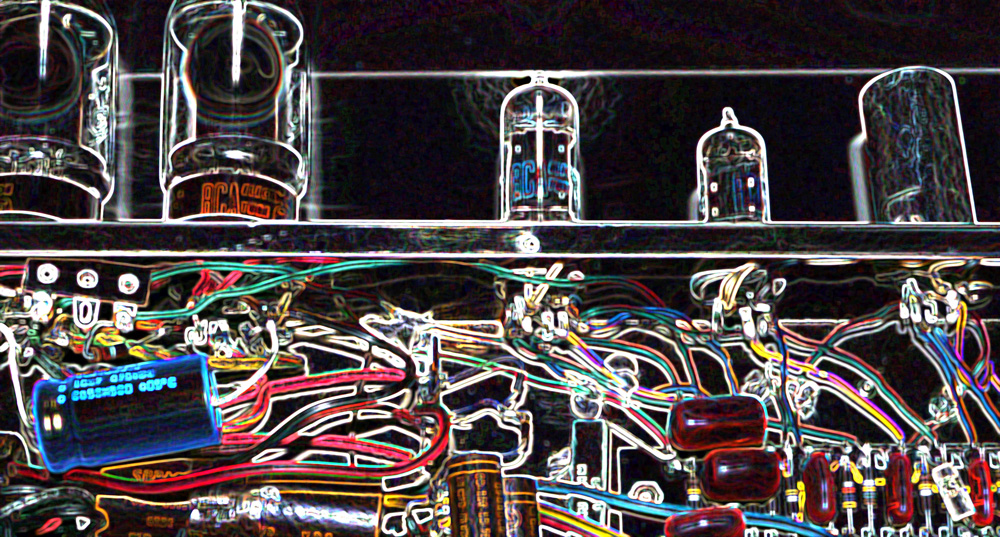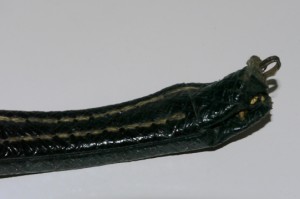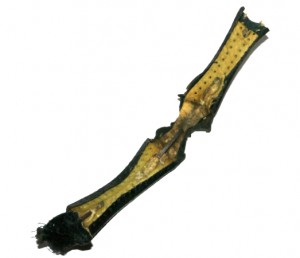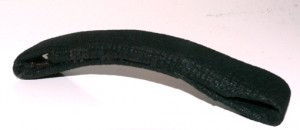I have been searching high and low for a replacement handle for my Gibson Recording Amp. The existing handle was broken beyond repair and my online search revealed many handles but none with a look that quite resembled the original in form or function. When I took a closer look at it I had the thought of trying to deconstruct it and possibly using the pieces to make templates from. That’s what I did.
Below is a photo of the original unusable handle.
I cut the stitching with a razor blade and carefully peeled off the old tolex. This revealed some stacked and glued leather, a spring steel strap (which was broken), and a top layer of leather that sat atop the strap.
I purchased some Tolex online but upon receiving it I was a bit disappointed: 1) it was much thinner than I had hoped and nowhere as thick as the original tolex 2) It was very difficult to tell which was the backing side and which was the top side…I ended up guessing; 3) Contact cement seemed to soften it very readily. So I had no illusion that my new handle would look exactly like the original….I just wanted to see if I could go about reconstructing one anyway.
I must say…it came out really well for a first shot and I’m going to hunt around for some more sources of Tolex (hopefully thicker and closer to the original pattern). I found that I had a broken piece of spring steel fish tape…such as electritions use to fish wires through walls and ceilings. It just happened to be very similar to what was used in the original handle. I had trouble bending it in the sharp curve that it needed for each end and the only solution was to heat it over a flame which seemed to allow the molecules of metal to move just enough to allow me to bend it without breaking it. I’m sure this is something one can get better at with a few tries and it eventually worked.
For the leather, I had an old belt that I harvested. I cut out the pieces using my templates and used contact cement to glue them and to adhere the tolex to them. I ended up with a nice handle that looks closer to the original to anything I found. It has a similar shape and a spring steel core. What remains to be done is to have a shoemaker or a luggage repair shop apply stitching to the handle on either side of the spring steel. This was both a decorative touch and a functional one that kept the spring steel core from shifting from side to side.
Here’s a picture of the handle. Again, far from perfect but perfectly functional. It was fun to see how it was built in the days when there was a lot of hand craftsmanship even in small things.



